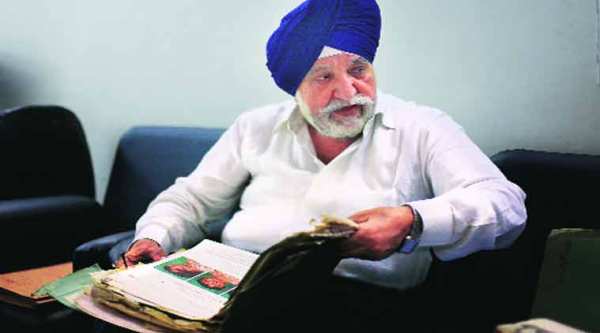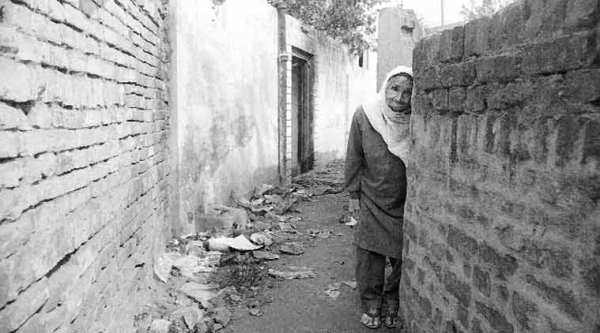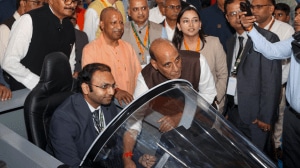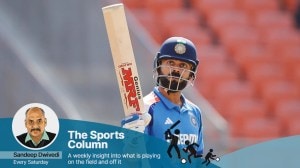Stay updated with the latest - Click here to follow us on Instagram
The helping hands, with medicine, rehab and justice
Reports of mass killing of Sikhs had reached him through friends and the patients he was treating for injuries.
 Harbhajan Singh in 2014. (Express photo by Ravi Kanojia)
Harbhajan Singh in 2014. (Express photo by Ravi Kanojia)
The riots had gone on for three days before J S Nanra, then vice president of the Delhi Medical Association, gathered the courage to step out of his Kirti Nagar house. Reports of mass killing of Sikhs had reached him through friends and the patients he was treating for injuries.
It was on November 3, 1984, the day Indira Gandhi was cremated, that Nanra drove to a camp in Shakur Basti with his wife, assistant and children, carrying cartons of medical supplies. “We had not realised the magnitude of the riots until we reached the camp, set up in a school. No medical treatment had been given to the people for the first couple of days. There were open wounds and, of course, burn injuries. Absolutely no medical assistance was being provided by the government. It was primarily individuals or groups formed to help the victims who took up most of the relief work,” Nanra says.
 Dr J S Nanra in 2014. (Express photo by Ravi Kanojia)
Dr J S Nanra in 2014. (Express photo by Ravi Kanojia)
One of these platforms of help was Nishkam Welfare Council, which now operates from a three-storey building in Tilak Vihar. With a library, a clinic and a vocational training centre, the organisation has worked for rehabilitation of widows and children of the riot victims.
Harbhajan Singh, the council’s president, recalls a visit to Sultanpuri camp a couple of days after the riots broke out. “The streets and buildings had bloodstains; we saw women walking like ghosts. Some were injured while others were in trauma,” he says.
Singh and other activists helped engage some of the women in the papad industry. “We tied up with Lijjat and tried employing most widows in the industry. This not only ensured they had some means of employment but also helped them come out the trauma.”
Others helped riot victims fight for justice. Advocate N D Pancholi took up law in 1987 largely because of the riots. He says this was after realising that there were very few good lawyers working for the riot victims or for workers in trade unions, while the accused and the oppressors were represented by strong teams of lawyers.
His roots lying in the JP movement, he was in 1984 the secretary of Citizens for Democracy, then working with trade unionists. After the riots, Pancholi was part of a fact-finding team of the CFD and its sister organisations PUCL and PUDR, which came out with the first reports on the killings, with Panchali co-authoring “Truth about Delhi Violence — A Report to the Nation”. He was among several witnesses who filed affidavits before the various panels set up. “We got people to file complaints before the police and the commissions. PUCL-PUDR reports had the names and details of the police officials, politicians and perpetrators, but nothing was done,” says Pancholi, who was in Chandni Chowk and then Mongolpuri between November 1 and 4.
 This photograph by Praveen Jain shows Ram Rakhi near Bhogal, Delhi, in 1984. Then over 80, she lived with her family in a community of Sikhs at Hari Nagar Ashram, where they were attacked. The family ran a truck business, and over 30 of their trucks were burnt. Ram Rakhi died in 1994.
This photograph by Praveen Jain shows Ram Rakhi near Bhogal, Delhi, in 1984. Then over 80, she lived with her family in a community of Sikhs at Hari Nagar Ashram, where they were attacked. The family ran a truck business, and over 30 of their trucks were burnt. Ram Rakhi died in 1994.
Fellow advocate H S Phoolka, now 59, remains the face of the legal campaign to get justice for riot victims. He is now a member of the Aam Aadmi Party and contested the Lok Sabha elections from Ludhiana.
In 1984, Phoolka and his wife escaped rioting mobs with the help of friends and neighbours. At one stage, the family decided to flee to Punjab but then changed its mind after what they saw in east Delhi during a visit with civil society groups. Phoolka joined Citizens Justice Committee, Citizens for Democracy and other organisations, helping victims and witnesses file affidavits. He was counsel for CJC before the Justice Rangnath Misra Commission in 1985, and later co-authored a book with journalist Manoj Mitta, When a Tree Shook Delhi, a first-person account.
Now a senior advocate in Delhi High court, he is representing the victims in CBI courts and the high court in cases against Congress leaders Sajjan Kumar and Jagdish Tytler. He has also represented the victims in cases for higher compensation.







